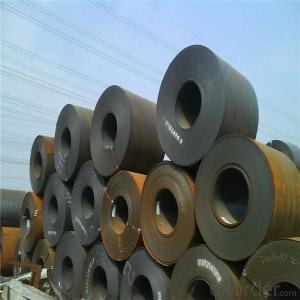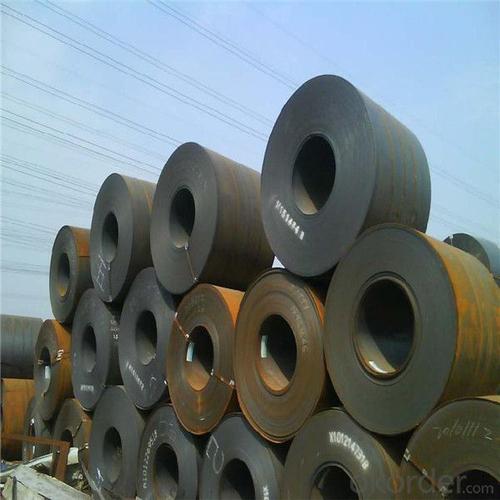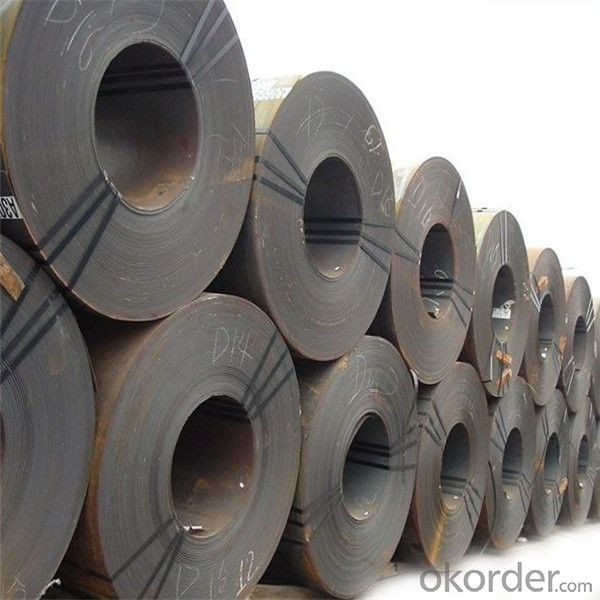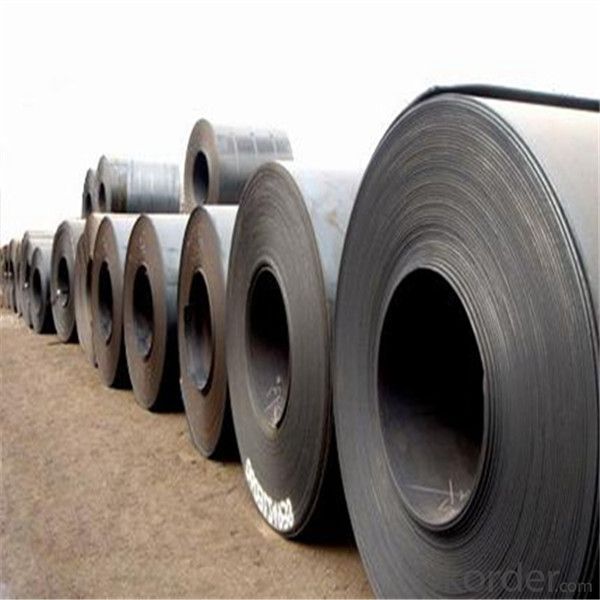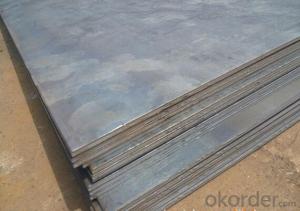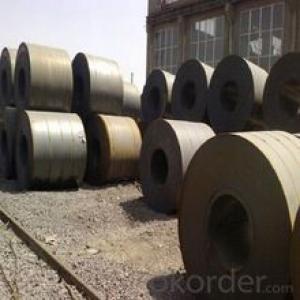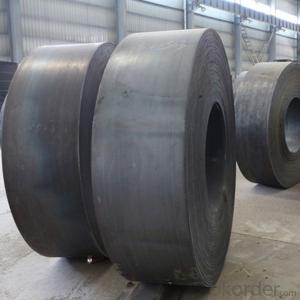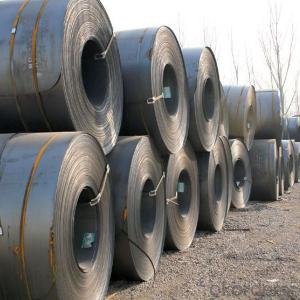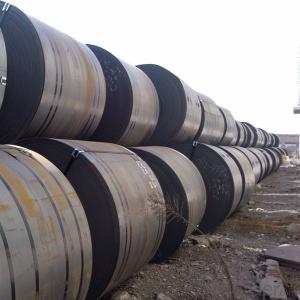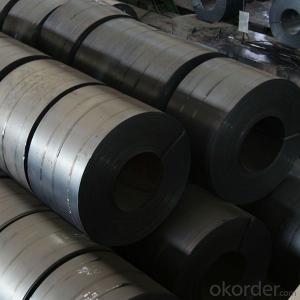SPHC SS400 HR Hot rolled Steel Coil Mill Directly Supply
- Loading Port:
- Tianjin
- Payment Terms:
- TT OR LC
- Min Order Qty:
- 50 m.t.
- Supply Capability:
- 1104 m.t./month
OKorder Service Pledge
OKorder Financial Service
You Might Also Like
Specification
Hot rolling is a mill process which involves rolling the steel at a high temperature (typically at a temperature
over 1700° F), which is above the steel’s recrystallization temperature. When steel is above the recrystallization
temperature, it can be shaped and formed easily, and the steel can be made in much larger sizes. Hot rolled steel
is typically cheaper than cold rolled steel due to the fact that it is often manufactured without any delays in the
process, and therefore the reheating of the steel is not required (as it is with cold rolled). When the steel cools
off it will shrink slightly thus giving less control on the size and shape of the finished product when compared to
cold rolled.
Uses: Hot rolled products like hot rolled steel bars are used in the welding and construction trades to make
railroad tracks and I-beams, for example. Hot rolled steel is used in situations where precise shapes and
tolerances are not required
Standard and Grade :
Hot rolled steel coils | ||||
JIS | ASTM | SAE | EN | |
Commercial quality | G3131 SPHC | A569 A635 A659 A1011 CS Type A,B,C | 1006~1025 |
10111 DD11 |
Drawing quality | G3131 SPHD | 1006~1010 | 10111 DD12 | |
Deep drawing quality | G3131 SPHE | A622 A1011 DS Type A,B | 1006~1010 | 10111 DD13 DD14 |
General structure (T.S.<490N/MM2) | G3101 SS330 SS440 G3106 SM400A G3132 SPHT1 SPTT2 SPHT3 | A36 A283 GR.C A570 GR.30~40 A1001 SS GR.30~40 |
1010~1025 | |
General structure (T.S.≥490N/MM2) | G3101 SS490 G3106 SM490A SM490YA | A570 GR.45~50 A607 GR.45~70 A1011 SS GR.45,50 |
J1392 050X | |
|
|
Application :
Automobile Industry, electrical appliance, machinery manufacturing, container manufacturing, shipbuilding,
bridge, pipeline, and receive high acclaim from our customers for its excellent quality.
Packing:
Packaging Detail | The packing of coil consists of anti-damp paper ,PVC film ,hardboard paper , steel box , strapped with steel strips, fitted with locks and edge protectors and guarantees the optimal condition of the delivered goods. Each coil can be additionally fitted with wooden/steel skids(eye of the side) or wooden pallets(eye of the sky) |
Delivery Time | within 30 days of receipt of LC original or prepayment |

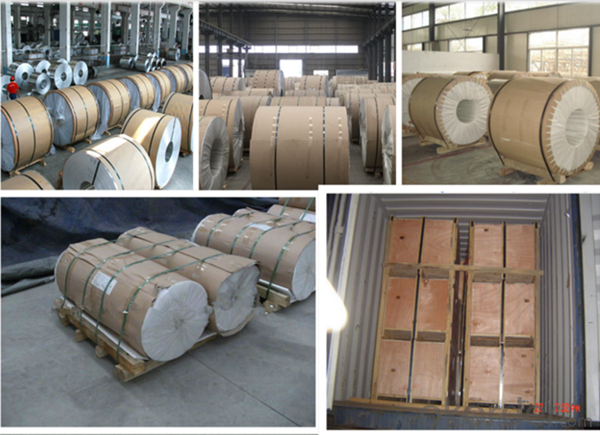
Our Services
MOQ | FCL, 25 metric tons per 20GP, can be assorted with different sizes. |
LCL for trial order is acceptable. | |
Price Term | EX-WORK, FOB China Port, CNF, CIF |
Payment | T/T, 30% advanced payment before production and balance before shipment; OR Irrevocable L/C at sight. |
Delivery Time | within 30 days of receipt of LC original or prepayment |
FAQ:
1. Can you offer OEM to me? What about MOQ?
Of course, we are a professional with OEM manufacturer for 9 years. the MOQ can be 50 ton/ order..
2. How to guarantee the quality of the products?
We have established the international advanced quality management system,every link from raw
material to final product we have strict quality test;We resolutely put an end to unqualified products
flowing into the market. At the same time, we will provide necessary follow-up service assurance.
3. How long can we receive the product after purchase?
Usually within thirty working days after receiving buyer’s advance payment or LC. We will arrange the
factory manufacturing as soon as possible. The cargo readiness usually takes 15-25 days, but the
shipment will depend on the vessel situation.
4.Q: What is your terms of payment ?
We prefer LC at sight and 30%T.T in advance ,balance after the copy of B/L
- Q: How do steel coils contribute to the marine vessel construction industry?
- Steel coils are a vital component in the marine vessel construction industry as they serve as the primary material for building the hulls and structural components of ships and boats. The high strength and durability of steel make it ideal for withstanding the harsh conditions of the marine environment, including corrosion from saltwater and extreme weather conditions. Steel coils are used to fabricate various ship parts such as hull plates, bulkheads, decks, and frames, ensuring the structural integrity and safety of the vessel. Additionally, steel coils allow for efficient and cost-effective manufacturing processes, enabling the construction of vessels of different sizes and types to meet the diverse needs of the maritime industry.
- Q: Can't find it- this is for a physics experiment for youngs modulus done with a steel wire.
- It is the Yield Strenght that you are looking for...that is another word for elastic limit. AND, for steel, it does depend on the variant of steel. Not all types of steel are identical, since steel isn't a pure substance. For Young's modulus (and other stiffness properties), just about all variants have the same values. However, for strength properties like Yield strength and ultimate strength and fatigue strength, it does depend on variant, and is precisely why different recipies exist in AISI standards.
- Q: explain what happen if carbon steel is exposed to an oxygen rich atmosphere at elevated temperature inside a furnace.
- Assuming the steel isn't actually melted, two things will happen. First, a layer of iron(ii) oxide, FeO will slowly develop on the surface, getting thicker over time. This layer is usually poorly bonded to the metal surface, it tends to flake off, exposing fresh metal. This is known as mill scale, it's also known as wustite which is the mineral term. Second, the surface of the steel will become decarburized, essentially becoming pure iron, not steel. The depth of the decarburized layer depends on the temperature, time, and the diffusivity of carbon in the steel at the given temp. This has some implications to engineering, in hot-rolling or forging of steel shapes for example. It's often the case that the stress and strain in a material is greatest at or near the surface. Therefore the weakened, decarburized layer at the surface may have a much greater detrimental effect on the steel's performance than might be expected. In a more specific example, die and tool steels depend on their carbon content for their strength and wear resistance, Therefore if such steels are heated in an oxidzing atmosphere, wear resistance is totally destroyed: The thin decarburized iron layer will be extremely soft and malleable.
- Q: This problem has puzzled me for a long time i always think about why stranded people on islands cant make a proper civilization and i always think it comes down to the ability to work metal. But its not like they could make a steel smelter/furnace out of sand...they would need an older one to use to make the new one...where the hell did the first one come from then????
- it is a problem to work metals thats why the first furnaces were for metals with a low melting point eg copper. To built a furnace for iron you need a very high temperature and for steel additional chemical treatment probably not available on an island. To smelt iron should be possible though as a clay furnace with the right coal is hot enough to produce raw iron.
- Q: How are steel coils used in the construction of bridges?
- Steel coils are an essential component in the construction of bridges. These coils are typically made from high-strength steel and are used for various purposes throughout the bridge-building process. One of the primary uses of steel coils in bridge construction is for manufacturing structural components. These coils are cut, shaped, and welded together to create beams, columns, and trusses. These structural elements provide strength and support to the bridge, ensuring its stability and durability. Steel coils are also used in the fabrication of bridge decks. These decks are the upper surface of the bridge, providing a roadway for vehicles and pedestrians. The coils are rolled into sheets and then further processed to create the deck plates. These plates are then assembled and attached to the bridge's structural components. Another important application of steel coils in bridge construction is for reinforcing concrete structures. Rebar, which is short for reinforcing bar, is made from steel coils and is embedded within the concrete to enhance its strength and resistance to tension. The rebar is typically placed in strategic locations, such as within the bridge piers and abutments, to provide additional support and prevent cracking or collapsing. Additionally, steel coils are used for manufacturing bridge expansion joints. Expansion joints are critical components that allow bridges to expand and contract with temperature changes and other external factors. These joints are made using steel coils, which are formed into plates or strips that can be easily installed and adjusted to accommodate the bridge's movement. In summary, steel coils play a crucial role in the construction of bridges. They are used for manufacturing structural components, bridge decks, reinforcing concrete structures, and expansion joints. Steel coils provide the necessary strength and support required for building safe and reliable bridges that can withstand various loads and environmental conditions.
- Q: How are steel coils used in the food processing industry?
- The food processing industry commonly uses steel coils for various purposes. One primary use is in the production of food packaging materials like cans and containers. These coils are transformed into thin sheets or strips and then shaped and sized for packaging different food products. Steel coils are also utilized in manufacturing equipment and machinery used in food processing plants. This includes crucial machines like conveyors, mixers, and slicers, which enable efficient and automated food processing. Steel's durability and strength make it an ideal material for these types of equipment, as it can withstand heavy usage and maintain its structural integrity. Additionally, steel coils are used in constructing storage and refrigeration facilities within the food processing industry. These coils are transformed into durable and insulated panels that create walls and ceilings in cold rooms, freezers, and warehouses. Steel's excellent thermal properties help maintain the desired temperature and prevent spoilage of perishable food items. Moreover, steel coils are employed in the production of cooking and baking equipment, such as ovens and grills. These coils are transformed into heating elements that provide consistent and efficient heat distribution during the food preparation process. This ensures that food is cooked or baked evenly, resulting in high-quality and delicious products. Overall, steel coils play a crucial role in the food processing industry by providing necessary materials for packaging, equipment, and infrastructure. Their strength, durability, and thermal properties make them a preferred choice for various applications within this industry, ensuring the production of safe and high-quality food products.
- Q: What are the different types of steel coil slitting techniques?
- There are several types of steel coil slitting techniques, including rotary shear slitting, loop slitting, and oscillating slitting.
- Q: which type of carbon steel does not have manganese
- None. Mn is a trace impurity in all steels, if you look carefully enough. If you want to find a steel where Mn is not intentionally added, start looking at the alloy composition specifications, there are hundreds of steels. Why are you worried about Mn? Mn is typically added to steels for a very good reason.
- Q: Obviously this is an easy question for anyone who works with metal. However, I am currently writing a book and had an idea that had to do with these two metals. Is it possible for gold to be folded into steel while it is being forged? Do 3-metal alloys exist? If this is not possible with current metal-working techniques and technology, what would be needed to make it possible? And finally, what exactly would the mixing of these two yield? A weak metal? A brittle metal? How would it compare to iron or gunmetal? If you have no idea, please offer speculations. Thank you!
- Since steel is already an alloy (iron with other metals or carbon), you're not alloying gold with a a metal per se. It is possible, though, to alloy gold with steel. However, the creation of any alloy has a practical application behind it. For example, gold is alloyed with silver and copper because otherwise, the gold is too soft to stand up to the use it is intended for and needs to be hardened.
- Q: Hi, does anyone know where i can find more about this topic ? fire resistant steels for structural applications. thanks
- Gavin, the danger posed by steel columns and girders during a fire in a building, is not the danger of the steel melting but of the steel expanding and snapping the bolts that hold all of the steel together. Very high temperatures can be achieved in a building fire because the up-draft caused by the rising hot air, delivers a massive amount of oxygen to the burning carpet, paper and furniture. When a steel frame office tower burns, the heat expands the steel and snaps the bolts. This causes the building to fall-down and not necessarily, burn-down. I am too lazy to look-up the melting point of steel but it is not very high. That is one reason for the columns and girders in steel framed buildings, to be covered in asbestos (which is a fatally toxic material) or magnesium di-oxide.
Send your message to us
SPHC SS400 HR Hot rolled Steel Coil Mill Directly Supply
- Loading Port:
- Tianjin
- Payment Terms:
- TT OR LC
- Min Order Qty:
- 50 m.t.
- Supply Capability:
- 1104 m.t./month
OKorder Service Pledge
OKorder Financial Service
Similar products
Hot products
Hot Searches
Related keywords
